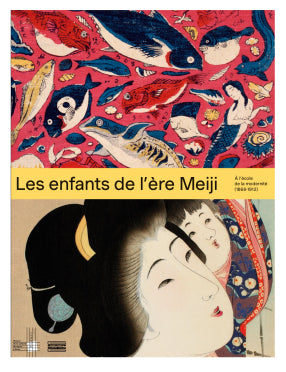Les Enfants de l'ère Meiji
- Authors: De (auteur) Collectif
- Publishers: GOURCUFF GRADEN
- Date of Publication: 2022-04-15
- Pages: 192
- Dimensions: 281mm x 222mm
At the beginning of the Meiji era (1868-1912), when, under the influence of the West, the
Japan is implementing school education, we see appearing in the
traditional prints, schoolchildren dressed in western style, playing
or study, representing an ideal child. These prints are reflections of a
new era and a society transformed by modernization. They
use English words or illustrate the lives of famous Westerners
thus serving as educational material intended to educate girls and boys
who aim to succeed in life by opening up to the world There still remains
a scent of the Edo period (1603-1868) in the alleys of Japanese cities and
from the middle of the Meiji era, and we find in these prints a certain
nostalgia for that bygone era, with children dressed in delightful
Kimonos with old-world charm. Miyagawa Shuntei, Yamamoto Shôun and others
masters of printmaking born during the Meiji era found some success with
their meticulous representations of children perpetuating fashionable games
the Edo period. The old toy prints (omocha-e) also continue
to be produced and are still as popular with children. Bringing together
prints and books from the Kumon Institute of Education and the Machida City Museum
of Graphic Arts, this work accompanies an exhibition which takes a look
unpublished on the representations of children having fun and studying at a time when
The wind of modernity is blowing, even if not all traces of Edo have been
erased. It brings together more than 150 prints representing children, and others
intended for children: educational prints, toy prints or even
story prints. This is an unpublished and original illustration of the period
Meiji, which interested the Western world so much.
Share

